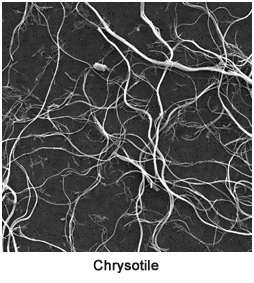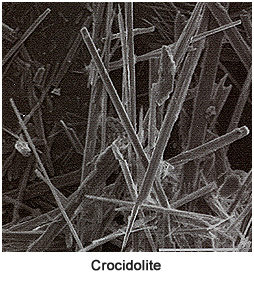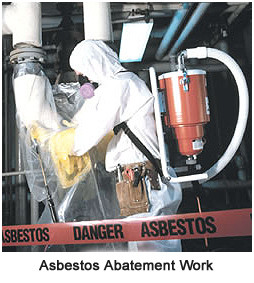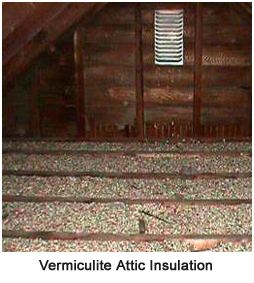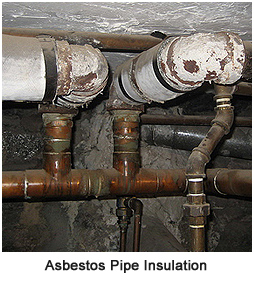Asbestos Info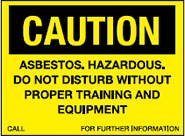 Asbestos Types and CharacteristicsAsbestos is a magnesium silicate with a crystalline fibrous structure. The word asbestos derives from an ancient Greek word meaning 'inextinguishable.' It refers to a group of at least 6 varieties of asbestos: chrysotile actinolite, amosite, anthophyllite, crocidolite and tremolite. 95% of all asbestos is chrysotile. Asbestos is impervious to heat and flame, has higher tensile strength than steel and is an excellent insulator. Its fibers are hollow and light, becoming airborne with the slightest air current, and so flexible that they can be spun and woven into fabric. The fibers occur in two basic forms: amphiboles, which are straight needle-like fibers, and serpentine asbestos, whose fibers are curled and more flexible. Asbestos Historical Uses Asbestos has been used by man for many thousands of years. The ancient Egyptians attributed magical powers to it for its resistance to fire, using it in rituals. Ancient priests would “fire-walk” through flames. Emperors were shrouded in asbestos funeral robes. During his travels in Siberia, Marco Polo was shown a cloth that would not burn, and learned that it was woven from a mineral mined at a nearby mountain. In the Middle Ages, the emperor Charlemagne was said to have convinced a group of hostile warlords that he had magical powers when he threw his asbestos tablecloth into the fireplace, and then pulled it out, undamaged by the flames. More recently, asbestos was extensively used in WW II submarines where a small fire could swiftly become a deadly disaster. Theater curtains and fire blankets were typically woven from asbestos fibers combined with cotton. Film makers suspended huge screens over staging and sifted asbestos fibers over the Wizard of Oz and It’s a Wonderful Life to imitate snow. Asbestos even found a convenient way to hitch a ride into human lungs with other carcinogens; Kent Micronite filter cigarettes were laced with crocidolite asbestos. Asbestos Abatement and Hazard ReductionMinimizing asbestos hazards will involve either enclosing the material or encapsulating it. Enclosure involves the construction of an airtight, permanent barrier around the asbestos-containing component. It may be considered permanent until demolition or renovation , at which time it may be required to be removed. Encapsulation is commonly used for pipe, furnace, and boiler insulation. The encapsulating process either coats the material or binds the fibers together. Both these methods are relatively cheap when compared with removal, but future removal may still be necessary. Air quality testing following an encapsulation or enclosure is not typically performed. Asbestos removal is the permanent, but most expensive method of dealing with asbestos. It also poses the greatest risks to workers and building occupants due to the inherently hazardous nature of the work. Wetting agents used to minimize fiber release are always required for any activity where asbestos may be disturbed. Asbestos removal is also typically performed within enclosures that vary in size from small glove bags to the containment of entire buildings or portions within. Abatement contractors are the world’s number 1 consumer of poly (plastic) sheeting. Portable air ventilation systems are used to continually filter and exchange air within enclosures and workers use personal safety measures that include respirators, gloves and protective clothing. Air quality testing in occupied adjacent areas of a building during asbestos removal projects is required in some instances and highly recommended in others. Who is at risk for an asbestos-related disease?Asbestos abatement (removal) workers, mechanical and acoustic contractors, renovation and demolition contractors and other trades associated with structures and building materials may encounter asbestos-containing materials during the course of their work. Anyone working in an environment where asbestos is present in poor condition, or is subject to damage or disturbance, may face a risk of exposure. Asbestos-containing material may release asbestos fibers into the air during product use, demolition work, building or home maintenance, repair, and remodeling. Everyone is exposed either knowingly or unknowingly to asbestos at some time during their life. Low levels of asbestos are present in the air, water, and soil. Busy city intersections often test high for airborne asbestos fibers due to asbestos use in the manufacturing of brake pads. However, most people do not become ill from their exposure. There is a clear relationship between higher exposures and the likelihood of developing an asbestos-related disease. Malignant diseases associated with asbestos exposure include, mesothelioma and lung cancer. Significant exposure to any type of asbestos will increase the risk these diseases and other, nonmalignant disorders such as asbestosis, pleural plaques, pleural thickening, and pleural effusions. Asbestos In HomesSome roofing and siding shingles are made of asbestos cement. Houses built between 1930 and 1950 may have asbestos as insulation. Asbestos may be present in textured paint and in patching compounds used on wall and ceiling joints. Their use was banned in 1977. Artificial ashes and embers sold for use in gas-fired fireplaces may contain asbestos. Older products such as stove-top pads may have some asbestos compounds. Walls and floors around woodburning stoves may be protected with asbestos paper, millboard, or cement sheets. Asbestos is found in some vinyl floor tiles and the backing on vinyl sheet flooring and adhesives. Hot water and steam pipes in older houses may be coated with an asbestos material or covered with an asbestos blanket or tape. Oil and coal furnaces and door gaskets may have asbestos insulation.
Asbestos In Business and IndustrySince the late 19th century asbestos has been used in hundreds of products and applications, including cement building materials, reinforcement in asbestos-cement products, brakes and clutches, water and sewage pipes, sprayed fire-proofing products, fire resistant insulation boards, floor tiles and enclosings, gas masks, lifts and machinery. Boilers and pipes were insulated with asbestos products in factories, steel plants, and power stations, and also in hospitals, schools, and homes. Shipbuilding facilities and railroads relied on asbestos as a primary insulator. Building contractors used asbestos in industrial and domestic construction for acoustic and thermal insulation, condensation protection and fireproofing.
|


